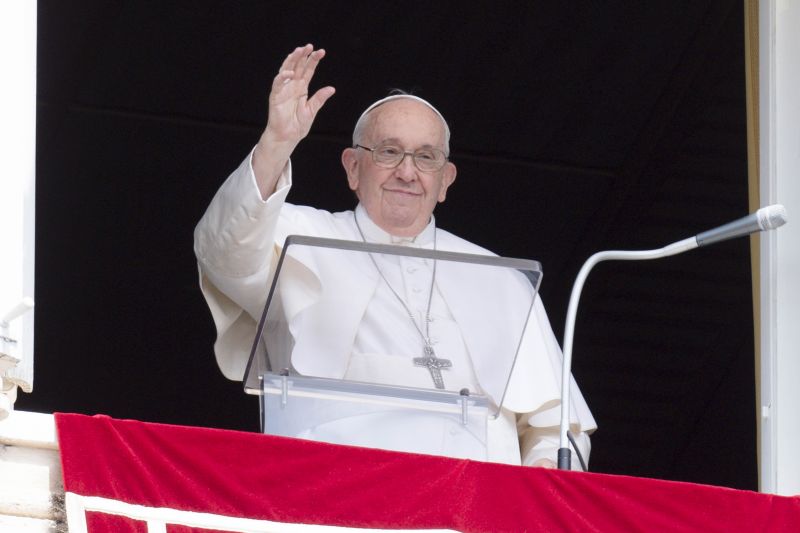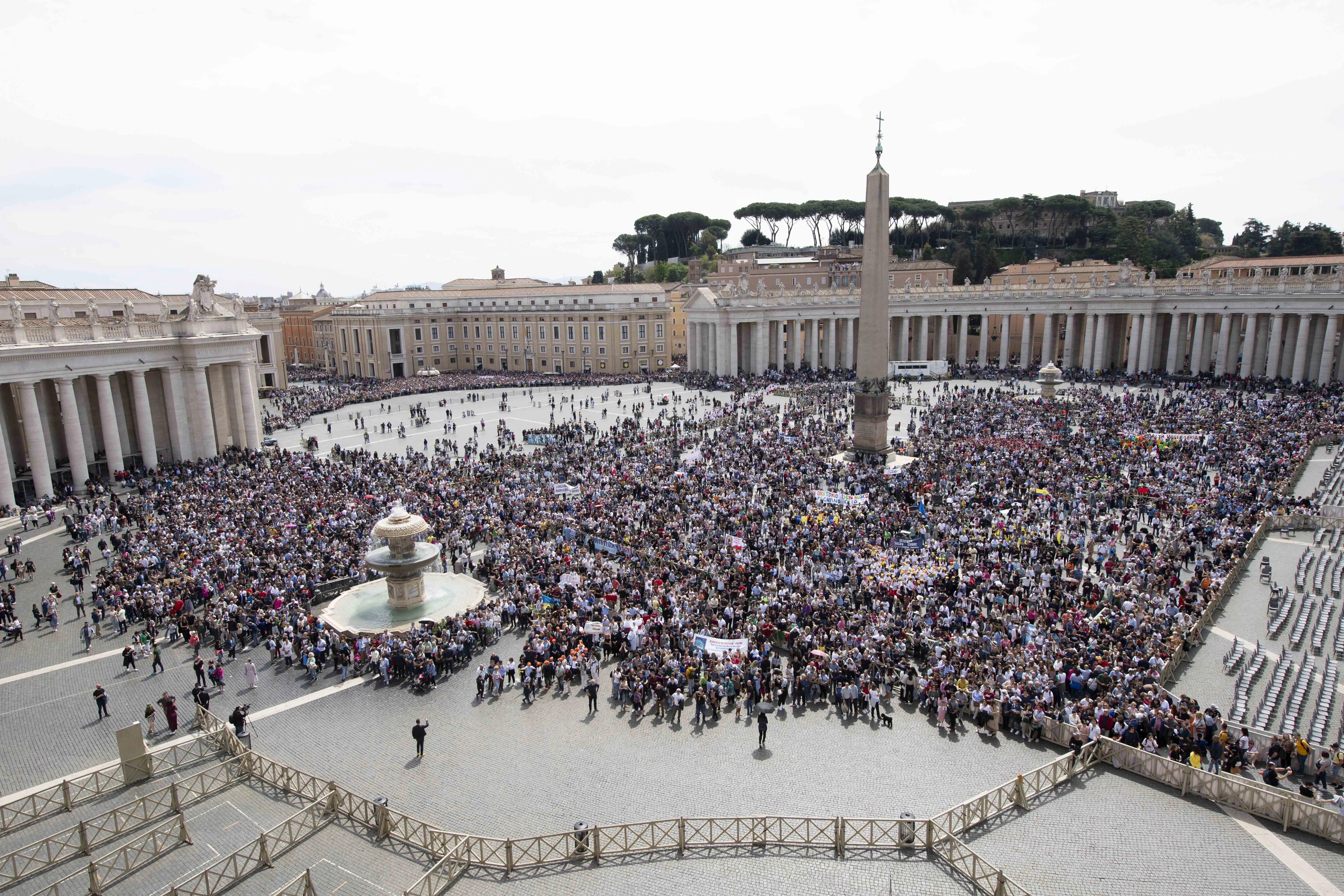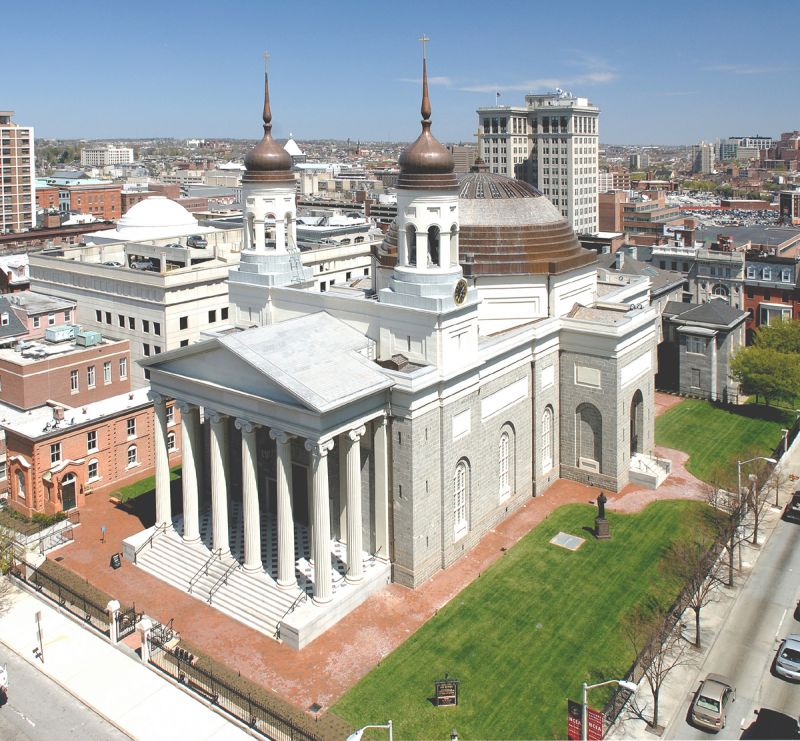
Rome Newsroom, May 6, 2024 / 11:12 am (CNA).
Edith Stein could be declared a doctor of the Church with the title “doctor veritatis,” or “doctor of truth,” following a petition from the Discalced Carmelites.
Pope Francis received an official request from the superior general of the Discalced Carmelites, Father Miguel Márquez Calle, on April 18 in a private audience at the Vatican to recognize the theological legacy of the saint who was martyred in Auschwitz.
If accepted, Stein, also known by her religious name St. Teresa Benedicta of the Cross, could become the fifth woman to be declared a doctor of the Church, a title that recognizes a substantial contribution to the Church’s theology and moral life.
With the petition, the Vatican Dicastery for the Causes of Saints can officially begin the required process to grant Stein the title.
The Carmelites first launched an international commission to gather the necessary documentation required by the Vatican in 2022, a year that marked both the 100th anniversary of Stein’s baptism and the 80th anniversary of her martyrdom.
A title that was proposed for her at the time was “doctor veritatis” because of her relentless intellectual pursuit of truth, which after her conversion she recognized in the person of Jesus Christ.
Stein was born in 1891 into a Jewish family in what is now Wrocław, southwestern Poland. The city was then known as Breslau and located in the German Empire.
After declaring herself to be an atheist at the age of 20, she went on to earn a doctorate in philosophy.
She decided to convert to Catholicism after spending a night reading the autobiography of the 16th-century Carmelite nun St. Teresa of Avila while staying at a friend’s house in 1921.
“When I had finished the book,” she later recalled, “I said to myself: This is the truth.”
Stein was baptized on Jan. 1, 1922, at the age of 30. She took the name Teresa Benedicta of the Cross when she became a novice Carmelite nun 12 years later.
Ten years after Stein entered the Carmelite convent, she was arrested along with her sister Rosa, who had also become a Catholic, and the members of her religious community.
She had just finished writing a study of St. John of the Cross titled “The Science of the Cross.”
St. Teresa Benedicta of the Cross died in the Auschwitz concentration camp on Aug. 9, 1942. Pope John Paul II canonized her in 1998 and proclaimed her a co-patroness of Europe the following year.
“God is truth,” Stein wrote after her conversion. “Anyone who seeks truth seeks God, whether or not he is aware of it.”
If you value the news and views Catholic World Report provides, please consider donating to support our efforts. Your contribution will help us continue to make CWR available to all readers worldwide for free, without a subscription. Thank you for your generosity!
Click here for more information on donating to CWR. Click here to sign up for our newsletter.









Anyone who seeks truth seeks God, itself an irrefutable truth whether one proceeds to identify God as truth itself. Doctor of truth, “A title that was proposed for her at the time was ‘doctor veritatis’ because of her relentless intellectual pursuit of truth, which after her conversion she recognized in the person of Jesus Christ”.
Edith Stein as she preferred to be called identified Christ with his Cross, which is to identify him as love. Her history, a life story of discovering truth in Christ during a philosophical search for truth makes her a perfect model and source for grasping our teleological end in this life. From this writer’s perspective her writing has the depth and clear focus on the acquisition of truth that would benefit the reader.
I am unaware that Teresa Benedicta of the Cross preferred to be know by her secular name. At her Baptism she was named Teresa. At her clothing with the Discalced Carmelite habit she once again deliberately chose Teresa, added Benedicta in honor of St. Benedict whose monks were instrumental in giving her a deep love for the liturgy and matured her personal spirituality. The title “of the Cross” was in honor of St. John of the Cross for whom she had great devotion. She thought of it as Teresa “blessed by the Cross.”
I am often disappointed and simultaneously amused at the contrived use of photos of Sts. Therese and Teresa Benedicta before they took the habit. There was not much that they desired more than to be clothed in the habit of Carmel. Presently we even have to strip the saints of their religious habits in order to be post-conciliar. I don’t have to wonder what they would think of the confection.
Assuming a new name upon monastic investiture is a very personal and deeply spiritual act. Her religious name framed her existence as a Discalced Carmelite which fulfilled the deepest longing of her heart.
Edith Stein no longer existed
“I am often disappointed and simultaneously amused at the contrived use of photos of Sts. Therese and Teresa Benedicta before they took the habit.”
Weird Comment of the Day. Sigh.
How often do you see a book on John Paul using his image from a time before his papacy? Unless a photo is specific to a topic in the individuals life, why would use one that did not portray the person in the maturity? Or even his priesthood?
How often Padre Pio as a layman? Maximilian Kolbe in his civvies? How often a portrait of Ignatius in his armor?
The abandonment of the religious habit was instrumental eradicating religious life, particularly for women.
The attempt, frequent within the effort to justify the abandonment of the traditions of orders and congregations, to equate figures from their history assenting to the mutilation they have undergone is propaganda. Therese of the Child Jesus and the Holy Face fought hard to get that habit, Edith Stein sought for ten years to enter Carmel. Embraced in their spousal relationship with Christ the old woman was dead.
Therese of the Child Jesus died the Carmelite iron maiden, at the height of her religious maturity, no little girl.
Teresa Benedicta walked off to her death at the hands of the Nazis braced in her Carmelite habit, a nun, no longer the up and coming academic. What a comfort to her fellow prisoners, what a chill up a Nazi spine.
I understand the point you are making yet I have no problem with those two photos. In fact, I like them because they represent the development, the path of the person to God and this article does just that, outlines her path so two photos provide a good illustration. It is also very interesting and enlightening to see the transformation reflected on the face of the Saint.
I also disagree with “Edith Stein no longer existed”. She was incorporated. The academic did not disappear but very clearly seen in her last book, ‘The Science of the Cross’ (a discourse about St John of the Cross’s doctrine’.
I recently read ‘The Milestones’, Pope Benedict’s autobiography written while he was a Cardinal. I looked at his photos there, from the early age to older with great delight. By the way, his autobiography convinced me of his true and utmost humility and truthfulness = holiness. I think he is Blessed.
Yet you might well see books by Joseph Ratzinger from the time before he became Pope Benedict bearing photos of him from about the time he wrote the books. As Edith Stein, she wrote about philosophy, and, aside from her last days leading up to and including her martyrdom, these writings are what most people know about her.
To my understanding, Sr Teresa Benedicta of the Cross was not a martyr for Christian faith. She (so as her sister Rosa) was killed because she was a Jew. I have always thought that “Doctor of the Church” is the best title for her.
In connection to her, I also recall that the Discalced Carmelites organized a monastery on the territory of Auschwitz with the major purpose to pray there and make reparations and purify the place of horror, hell on earth. Unfortunately, they had to leave that place because of the pressure of Jews who claimed Holocaust as their own; they accused the nuns of “appropriating” the Jewish Holocaust. To settle the conflict, Pope JPII (I think it was him) ordered Carmelites to leave their house. Reportedly, many visitors of Auschwitz would drop into the monastery seeking some comfort after what they saw and so the removal of Carmelites was bad for everyone including non-Christians.
I think Sr Terresa Benedicta of the Cross would be appalled with the fact that some people of her race insisted on a removal of a group of the dedicated to God women from the sight the murder, of her and many others – Jews, Gypsies, Slavs, Christians, communists. I studied her life, she was deeply Jewish and deeply Christian, her Jewishness found its completion in her Christianity. Her zeal for God is something I believe to be innate in the Jewish people. That utmost dedication to One True God to the point of death is very Jewish, like in the Prophets.
I am not sure why I am writing about this. Probably because figures like Edith Stein highlight the tragic idiocy of humanity (“this is mine” – “no, this is mine”) making it truly unbearable.
No offense, but I would like some clarification on what it now means to be a “Doctor of the Catholic Church”. For centuries, the title seemed to designate a saint who had ALREADY had a remarkable influence on the Church as a whole, but more recently it seems to indicate someone whom the Pope then reigning HOPES will at some point in the near future have a larger influence on the Church. Sts. Athanasius, Anselm, Ambrose, and Augustine fall into the former category; St. Hildegard into the latter.
Wikipedia can be useful: “Doctor of the Church (Latin: doctor “teacher”), also referred to as Doctor of the Universal Church (Latin: Doctor Ecclesiae Universalis), is a title given by the Catholic Church to saints recognized as having made a significant contribution to theology or doctrine through their research, study, or writing.”
This certainly describes Edith Stein, even in her earlier writings on phenomenology which she wrote under her preceptor, Edmund Husserl.
“This certainly describes Edith Stein, even in her earlier writings on phenomenology which she wrote under her preceptor, Edmund Husserl.” At best, that is like saying that Lars Onsager is a famous physicist. He kind of is, but unless you are a physicist (or maybe a chemist, since he won a Nobel prize in chemistry), I’m pretty sure you’ve never heard of him.
Neil deGrasse Tyson, on the other hand, is basically a nobody that everyone has heard of. You might not think physics had the equivalent of a Paris Hilton, but that’s kind of what he is.
Then there are people like Einstein and Newton; physicists who are genuinely important and actually well-known. These are the physics equivalents of Sts. Augustine and Thomas Aquinas; they need no introduction.
If you really want to see what something means, sometimes you have to dig deeper than Wikipedia.
God, as Truth, has been for me a treasure beyond price. May He be so to every one of us – Mahatma Gandhi
St. Teresa Benedicta of the Cross has been an object of devotion for me since I was a boy sixty years ago. What a heroic woman…she continues to leave me speechless. I made sure I was at her canonization. Her witness to Jesus Christ has been an anchor for my faith for many decades.
She was an impressive philosopher. I have found her theological and devotional writings rewarding. Do they support her being declared a Doctor of the Church? I think not. That sort of theological reflection was not her vocation.
Let us be honest in our recognition of heroic virtue and of superior theological contributions to the faith. There is no need to patronize any individual over and above their accomplishments achieved by cooperation with Grace. For some time now we have been canonizing individuals who, while good, very good even, are not exactly examples of heroic virtue.
The ambition to bestow the doctorate upon St. Teresa Benedicta of the Cross is, honestly, merely an ecclesiastical DEI job because of her identity as a woman, a Jew, a scholar. It has nothing to do with groundbreaking exceptional theological reflection. It is a vacuous effort, it is ultimately dishonest.
St. Teresa Benedicta of the Cross would not approve. She was a profoundly honest woman of exceptional common sense and virtue. Not a theologian. Her contemplative reflection does not rise to the level of Teresa, Catherine, Therese…
Well said. We need great theologians like St. Augustine, but we need great prayer warriors like St. Monica even more. St. Monica will never be a Doctor of the Church, nor should she, but she might be greater in the Kingdom of Heaven than her son, and we can be sure that for every famous theologian, there are hundreds or thousands of St. Monicas known only to God.
Profoundly insightful, and wonderfully unsettling. Puts things in their supernatural perspective.
I too greatly admire the writing and the life of St. Teresa Benedicta together with her fellow Carmelite saints Teresa, Therese, and John of the Cross. I’ve read much of their work, some more than once. Teresa Benedicta wrote a treatise on St. John (The Science of the Cross), but she very meticulously repeated and clarified what St. John had written. She has a brilliantly detailed work on ’empathy’ which is philosophy, not theology. I believe she wrote biographical notes or essays on some other notable Carmelites. She also has some wonderfully thoughtful and insightful essays on womanhood.
Her heroic virtue in her arrest, time in the concentration camp and facing death was apparent to all. Her love for her natural family, particularly her mother, was heart-rending to us folk who shared Edith’s anguish on the days leading to the day in the parlor. There we share Edith’s sorrow at informing her Jewish mother of her wish for Catholic Baptism. Her biography inclines her to sainthood. But what inclines the Church to name her one of its doctors? Nothing that I know.
Correction: The days of anguish for Edith occurred not prior to her Baptism but prior to her entrance into convent.
Would that St. Benedicta and St. John of the Cross would help me reserve my exuberant sharing of inaccurate memory!
Why the bigotry of calling her by the wrong name? She is St. Theresa Benedicta of the Cross.
I don’t think anything ill is meant by it. We tend to call recently departed saints by the names they were best known by when they were alive. We’ll be saying “Mother Teresa” instead of “Saint Teresa of Calcutta” and “Padre Pio” instead of “Saint Pio of Pietrelcina”, which is not quite the same thing, but somewhat related.